Download Red Dwarf Star Worksheet
Click the button below to get instant access to these premium worksheets for use in the classroom or at a home.
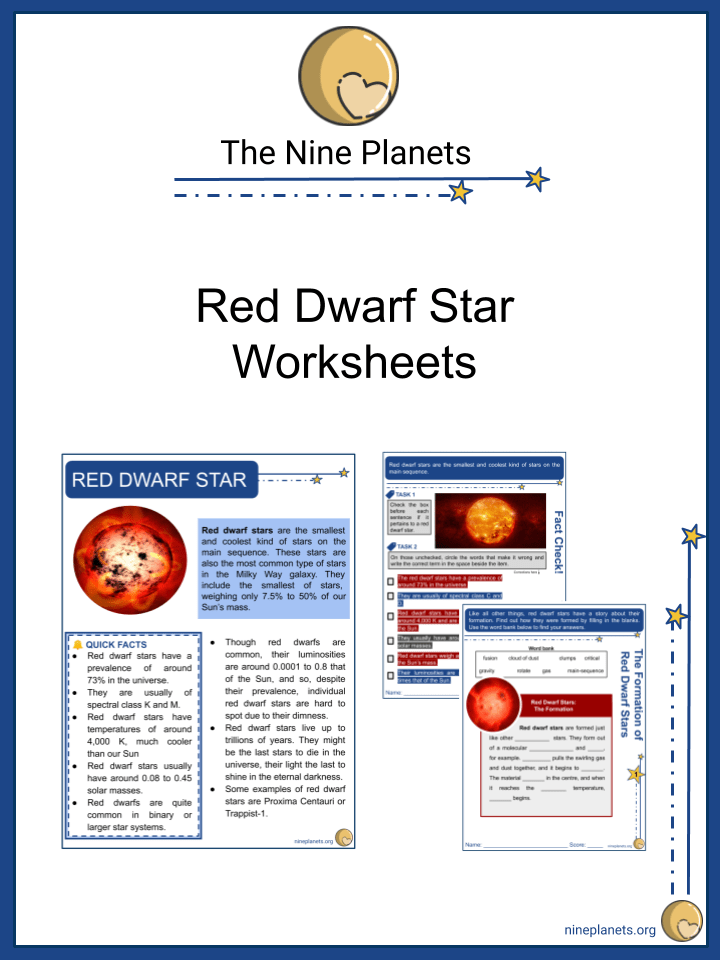
This worksheet can be edited by Premium members using the free Google Slides online software. Click the Edit button above to get started.
Download free sample
Not ready to purchase a subscription yet? Click here to download a FREE sample of this worksheet pack.
Resource Examples
Click any of the example images below to view a larger version.
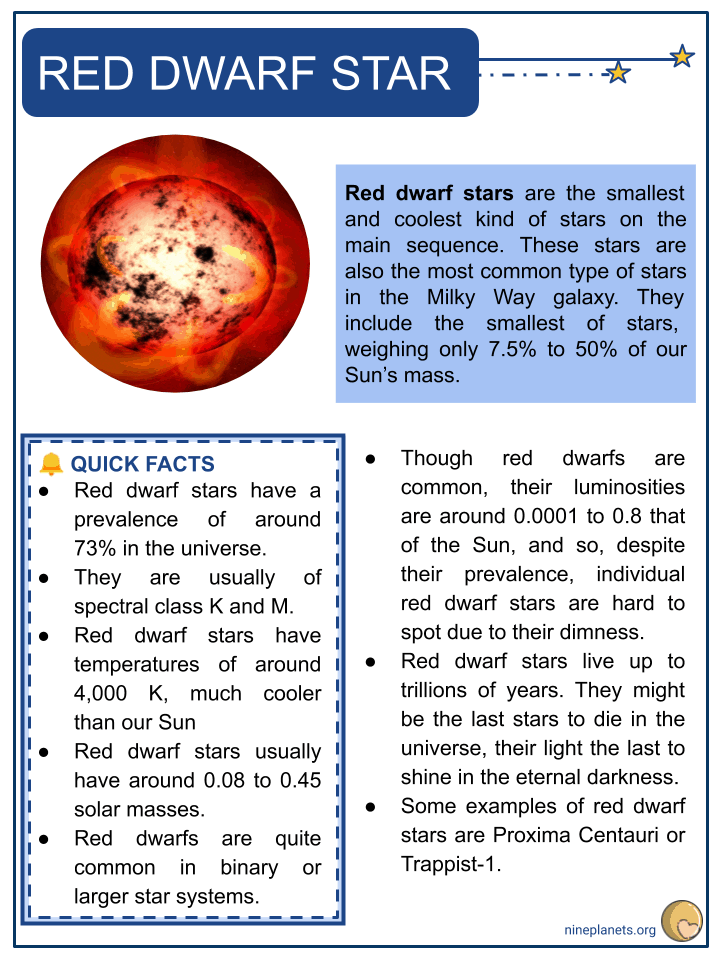
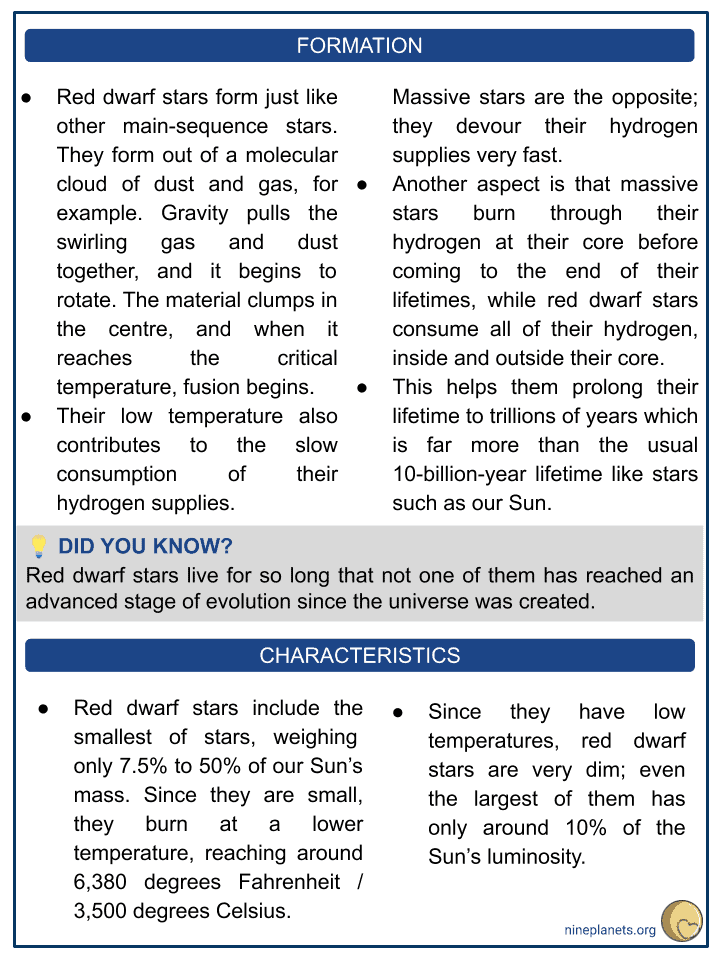
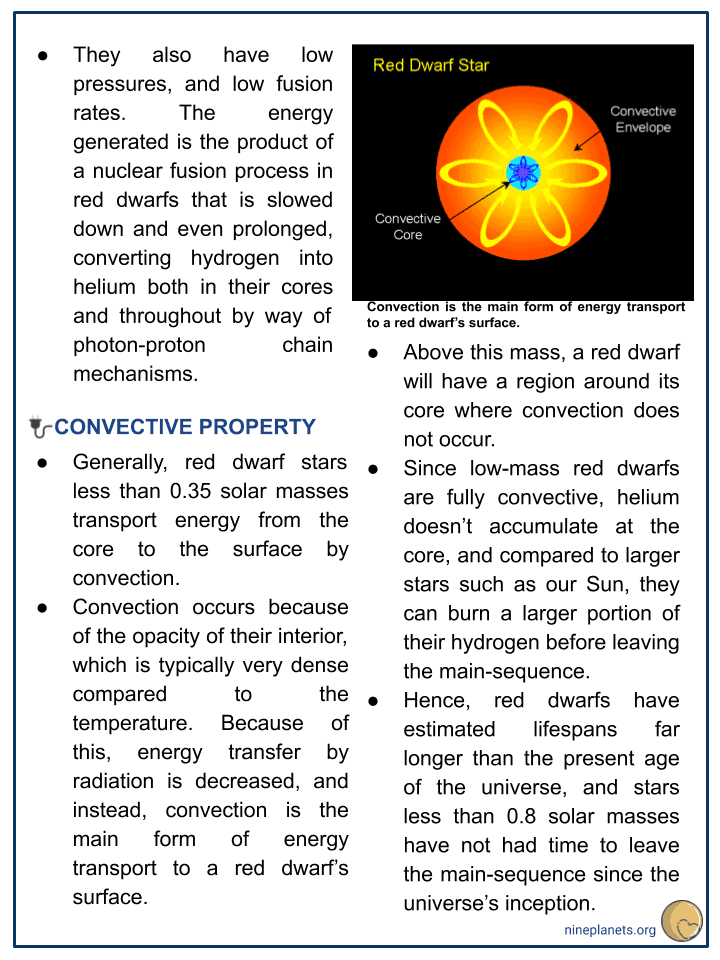
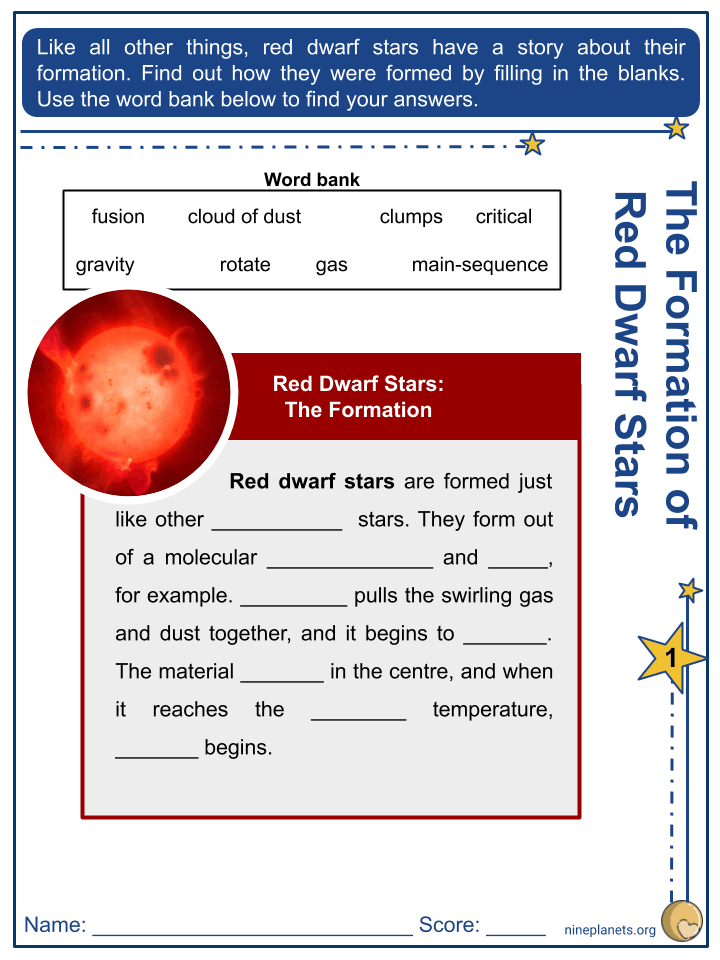
Key Facts & Information
- Red dwarf stars are the smallest and coolest kind of stars on the main sequence. These stars are also the most common type of stars in the Milky Way galaxy. They include the smallest of stars, weighing only 7.5% to 50% of our Sun’s mass.
Quick Facts
- Red dwarf stars have a prevalence of around 73% in the universe.
- They are usually of spectral class K and M.
- Red dwarf stars have temperatures of around 4,000 K, much cooler than our Sun
- Red dwarf stars usually have around 0.08 to 0.45 solar masses.
- Red dwarfs are quite common in binary or larger star systems.
- Though red dwarfs are common, their luminosities are around 0.0001 to 0.8 that of the Sun, and so, despite their prevalence, individual red dwarf stars are hard to spot due to their dimness.
- Red dwarf stars live up to trillions of years. They might be the last stars to die in the universe, their light the last to shine in the eternal darkness.
- Some examples of red dwarf stars are Proxima Centauri or Trappist-1.
Formation
- Red dwarf stars form just like other main-sequence stars. They form out of a molecular cloud of dust and gas, for example. Gravity pulls the swirling gas and dust together, and it begins to rotate. The material clumps in the centre, and when it reaches the critical temperature, fusion begins.
- Their low temperature also contributes to the slow consumption of their hydrogen supplies.
- Massive stars are the opposite; they devour their hydrogen supplies very fast.
- Another aspect is that massive stars burn through their hydrogen at their core before coming to the end of their lifetimes, while red dwarf stars consume all of their hydrogen, inside and outside their core.
- This helps them prolong their lifetime to trillions of years which is far more than the usual 10-billion-year lifetime like stars such as our Sun.
- Massive stars are the opposite; they devour their hydrogen supplies very fast.
- Red dwarf stars live for so long that not one of them has reached an advanced stage of evolution since the universe was created.
Characteristics
- Red dwarf stars include the smallest of stars, weighing only 7.5% to 50% of our Sun’s mass. Since they are small, they burn at a lower temperature, reaching around 6,380 degrees Fahrenheit / 3,500 degrees Celsius.
- Since they have low temperatures, red dwarf stars are very dim; even the largest of them has only around 10% of the Sun’s luminosity.
- They also have low pressures, and low fusion rates. The energy generated is the product of a nuclear fusion process in red dwarfs that is slowed down and even prolonged, converting hydrogen into helium both in their cores and throughout by way of photon-proton chain mechanisms.
Convective Property
- Generally, red dwarf stars less than 0.35 solar masses transport energy from the core to the surface by convection.
- Convection occurs because of the opacity of their interior, which is typically very dense compared to the temperature. Because of this, energy transfer by radiation is decreased, and instead, convection is the main form of energy transport to a red dwarf’s surface.
- Above this mass, a red dwarf will have a region around its core where convection does not occur.
- Since low-mass red dwarfs are fully convective, helium doesn’t accumulate at the core, and compared to larger stars such as our Sun, they can burn a larger portion of their hydrogen before leaving the main-sequence.
- Hence, red dwarfs have estimated lifespans far longer than the present age of the universe, and stars less than 0.8 solar masses have not had time to leave the main-sequence since the universe’s inception.
- As the proportion of hydrogen in a red dwarf is consumed, the rate of fusion declines, and the core starts to contract.
- The gravitational energy released by this size reduction is converted into heat, which is carried throughout the star by convection.
Classifying Red Dwarfs
- Red dwarf stars are among the most common stars in the Milky Way galaxy. It is quite difficult for scientists to distinguish a red dwarf star from a brown dwarf star.
- Brown dwarf stars are cool and dim, and probably form in the same way that a red dwarf does. However, brown dwarfs never reach the point of fusion due to their small sizes, and thus they’re not even considered stars.
- One postulated method of distinguishing a red dwarf from a brown dwarf is by calculating the celestial object’s temperature.
- Fusion-free brown dwarfs are cooler than 2,000 K, while hydrogen-fusing stars are warmer than 2,700 K. Everything in between could be classified as either a brown dwarf or red dwarf.
- In our Milky Way galaxy, about three quarters of the stars are red dwarf stars.
- According to astronomer Adam Burgasser of the University of California, the presence of molecules like methane or ammonia, that survive only in cold temperatures, suggests that an object is a brown dwarf.
- Presence of lithium also suggests a brown dwarf rather than a true star.
- Occasionally, chemicals in a celestial object’s atmosphere can reveal clues about what’s happening at its heart.
- Some astronomers believe that the term “red dwarf” does not refer to a single kind of star, but rather, it is applied to cooler objects, including brown dwarfs, which are often referred to as “failed stars” due to the lack of hydrogen fusion sustainability at their cores.
Examples Of Red Dwarf Star
- Red dwarf stars have a prevalence of around 73% in the universe, thus, they are the most prevalent stars out there. Here are some examples of red dwarf stars:
- Lacaile 8760 is a red dwarf star located in the constellation of Microscopium. This red dwarf is very faint, and it is one of the nearest stars to us, at around 12.9 light years.
- It has an apparent magnitude of +6.7. It can be seen with the naked eye under favourable conditions.
- Another red dwarf star close to Earth is Gliese 876. It is situated at only 15 light years away, in the constellation of Aquarius.
- It is among the closest stars to us that have a planetary system.
- It was the first red dwarf star to be discovered with planets. Currently, four confirmed exoplanets are orbiting Gliese 876.
- The closest red dwarf star to our planet is the Proxima Centauri. This is also known as Alpha Centauri C and is a member of a trinary system closest to Earth, Alpha Centauri.
- List of nearest red dwarfs from Earth:
- Proxima Centauri (4.2 ly)
- Barnard’s Star (5.95 ly)
- Wolf 359 (7.86 ly)
- Lalande 21185 (8.3 ly)
- Luyten 726-8 (8.7 ly)
The Future
- Small red dwarf stars have an unfathomably extended lifetime. They will most likely be the last beams of light in the universe to fade away. Eventually, all stars meet their end.
- When a red dwarf star burns through all of its fuel, it will become a white dwarf, and thus they will no longer undergo fusion at their core. Eventually, the white dwarfs will radiate away all of their heat and become black dwarfs.
- Red dwarfs will not pass through a red giant phase in their evolution.
Habitability
- Many red dwarfs have exoplanets orbiting around them. However, its planetary habitability is subject to many debates. Though red dwarfs have advantages such as their sheer number and longevity, some factors may make life difficult on planets orbiting a red dwarf.
- Generally, planets that are situated in the habitable zone of a red dwarf star would need to be very close to it, and thus the planet would most likely be tidally locked.
- This means that half of the planet would experience perpetual day, while the other, perpetual darkness. This would inevitably lead to enormous temperature variations. Such conditions would make it difficult for habitation.
- Another problem would be the atmosphere since most of it would be frozen, and leave the other side bare and dry.
- Variability in stellar energy output may also have negative impacts on the development of life. Red dwarf stars are often flare stars, which can emit gigantic flares, doubling their brightness in minutes. This would certainly make it difficult for life to develop and persist near a red dwarf star.
- Some new studies suggest that all red dwarf stars may have this trait. If this is proven to be true, chances for life to develop on planets near them are low to zero.
- If red dwarf stars are proven to be favourable towards the development of life near them, then they will be the last stars in the universe where life could develop, or survive.